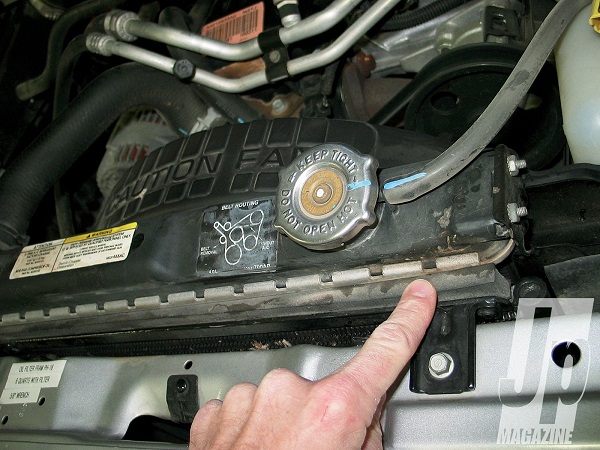How can you tell when your car’s radiator is leaking? When the temperature gauge on your dashboard reads high or a temperature warning light comes on, you have a cooling system problem that may be caused by leakage be it in the radiator itself or some other component.
First, make sure it’s coolant that’s leaking, not another fluid. (Coolant is often referred to as antifreeze, but technically coolant is a 50/50 mix of antifreeze and water.) You can easily check the coolant level in your see-through overflow tank. If it’s empty or low, the next step should be to check the coolant level in the radiator, but that should be done only when the engine is cool. Having too little coolant in the car’s cooling system can cause engine overheating and/or make your cabin heater blow cold air.
Once you know you’re losing coolant, the radiator is a good place to start. Some radiator leaks will be easy to spot — such as a puddle underneath the radiator — but others not so much. It’s best to check the radiator from every angle, not just from above, and pay particular attention to seams and the bottom. Rust inside the radiator or holes from road debris also can cause coolant leaks. Your vehicle may have an aluminum radiator that technically can’t rust, but aluminum can corrode or develop pinhole leaks too.
Antifreeze comes in different colors — green, yellow and pinkish-red, for example — feels like slimy water and usually has a sweet smell. If you can’t see coolant dripping or seeping, look for rust, tracks or discoloration on the radiator. Those are telltale signs of where it has leaked.
If the radiator appears to be OK, the cooling system offers several possibilities for leaks, including the hoses from the radiator to the engine, the radiator cap, water pump, engine block, thermostat, reservoir tank, heater core (a small radiator that circulates hot coolant into the dashboard for passenger-compartment heating) and others. A blown gasket between the cylinder head and engine block is another possibility, allowing coolant inside the combustion chambers — a problem that must be addressed immediately by a mechanic. (Thick white smoke coming from the tailpipe is actually steam, a telltale symptom.)
If you can’t find a leak, have it checked by a mechanic. Coolant has a way of escaping only under pressure when the car is running — possibly in the form of steam, which may not leave a trace. If the culprit continues to evade detection, you might consider a radiator stop-leak additive, available at auto parts stores, which seals small leaks — but it’s always better to find and repair the problem’s source, especially in the case of faulty head gaskets, which can lead your power supply to overheat and cause catastrophic engine damage.




